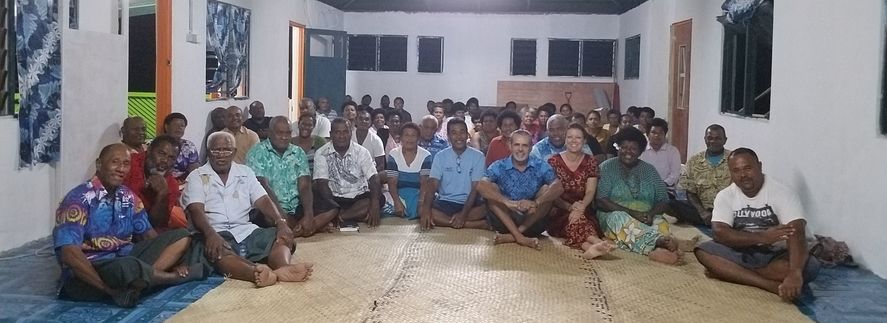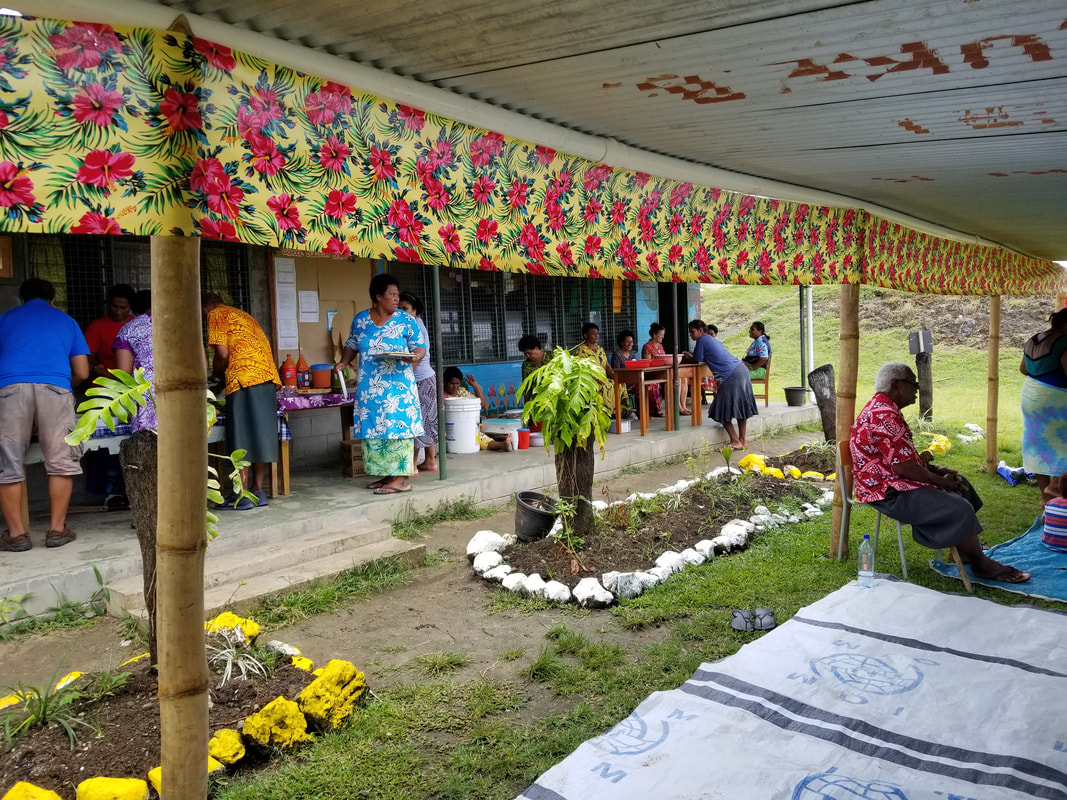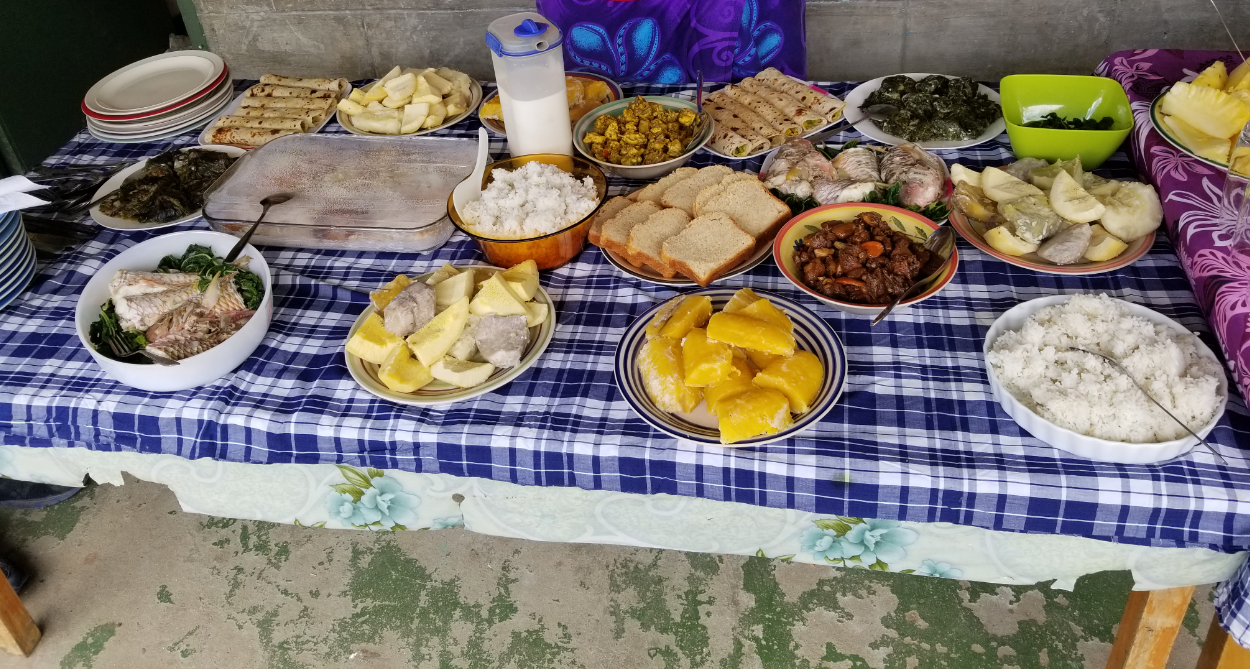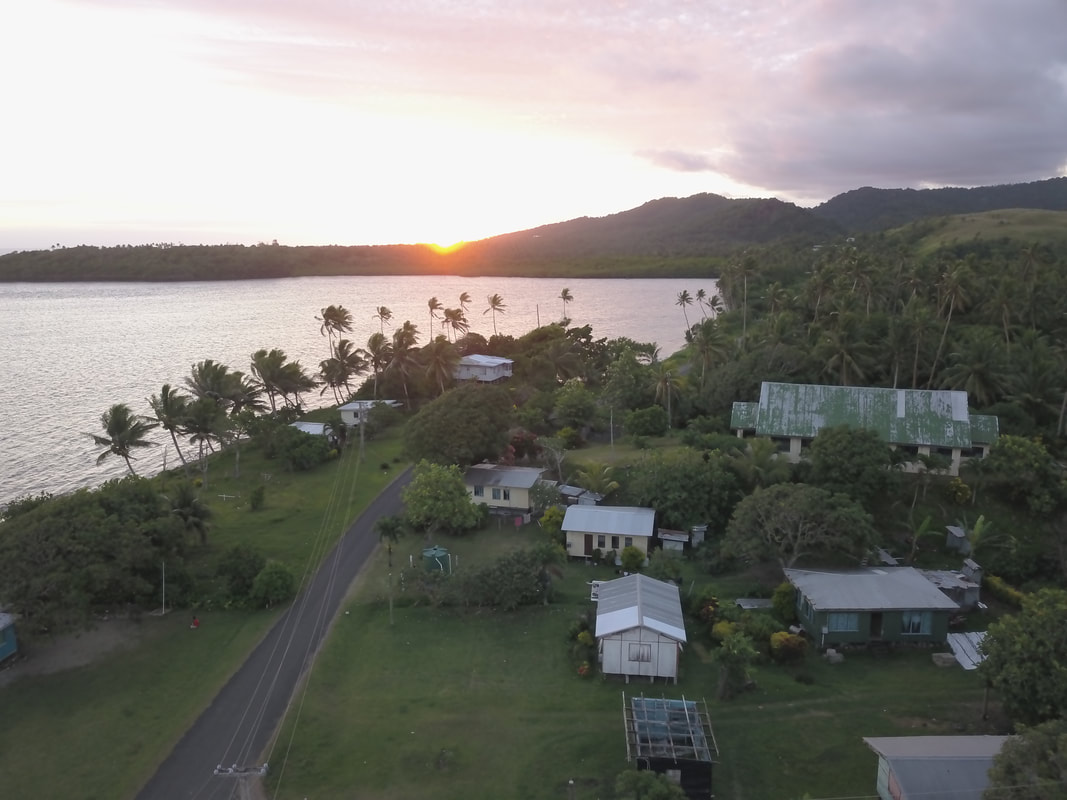The Nagigi Village
is committed and dedicated to providing Traditional Fijian Food, Cultural performances and activities for all by providing fully accessible facilities at the waters edge.Come visit and take delight in browsing through the handmade crafts market, relax on the large oceanfront wooden deck as you saviour traditional food and sip on homegrown organic fruit drinks. Experience the amazing sunrise and sunsets while lounging on the unique sand deck.

The Nagigi Village together with the EzaQua Xperience Project, a multi purpose watercraft, presents the opportunity for people with limited abilities to enjoy and participate in all programs including snorkeling with the EzaQua Watercraft Manual floating wheelchairs can be provided subject to availability, island tours available upon request.limited abilities to enjoy and participate in all programs including snorkeling with the EzaQua Watercraft (click The EzaQua Xperience tab above for more details). Manual floating wheelchairs can be provided subject to availability, island tours available upon request.
Nagigi Village History
Nagigi Village located on the south of Vanua Levu, Fiji has approximately 50 dwellings and 250 inhabitants . A true paradise, incredible beach, crystal clear blue water, a small island offshore, rainforest and rivers with pools in the interior.
Nagigi Elementary School Grades 1 – 8
Vanua Levu Sunsets
Video Galery
Fijian History
The majority of Fiji’s islands were formed through volcanic activity starting around 150 million years ago. Today, some geothermic activity still occurs on the islands of Vanua Levu and Taveuni. Fiji has been inhabited since the second millennium BC and was settled first by Austronesians and later by Melanesians, with some Polynesian influences. Europeans visited Fiji from the 17th century, and, after a brief period as an independent kingdom, the British established the Colony of Fiji in 1874. Fiji was a Crown colony until 1970, when it gained independence as the Dominion of Fiji. A republic was declared in 1987, following a series of coups d’état.
Fijian Culture
The culture of Fiji, including language, has created a unique communal and national identity. The inhabitants of modern Fiji are of indigenous Fijian background, as well as of Indian, Chinese and European ancestry. Indigenous culture has shaped the nation and is an active and living part of everyday life for the majority of the happy folk that live here.

Fijian Traditional Food
Fijian food has traditionally been very healthy. Fijians prefer a more tuber and coconut based diet. High caloric foods are good for hard-working villagers who need extra calories while working on their farms.
Fiji is a multicultural country and is home to people of various races. In most Fijians’ homes, food of other cultures is prepared on a regular basis such as Indian curries and Chinese dishes. Fiji is also famous for its seafood.

More Fijian History
Fijians (Fijian: iTaukei) are a nation and ethnic group native to Fiji, who speak Fijian and share a common history and culture.
Fijians, or iTaukei,[7] are the major indigenous people of the Fiji Islands, and live in an area informally called Melanesia. Indigenous Fijians are believed to have arrived in Fiji from western Melanesia approximately 3,500 years ago, though the exact origins of the Fijian people are unknown. Later they would move onward to other surrounding islands, including Rotuma, as well as blending with other (Polynesian) settlers on Tonga and Samoa. They are indigenous to all parts of Fiji except the island of Rotuma. The original settlers are now called “Lapita people” after a distinctive pottery produced locally. Lapita pottery was found in the area from 800 BCE onward.
As of 2005, indigenous Fijians constituted slightly more than half of the total Fijian population. Indigenous Fijians are predominantly of Melanesian extraction, with some Polynesian admixture.
Australia has the largest Fijian expatriate population, according to the Ministry of Pacific Island Affairs, while Fijians were also the fifth largest Pacific ethnic group living in New Zealand; a decrease of 8 percent between 1996 and 2001. The estimated Pacific Islander population size is 231,800 in 2001 Fijians comprising about 7,000 of that.[8] Outside Oceania, a substantial Fijian diaspora is found in other anglophone countries, namely Canada, United States and the United Kingdom.
The Bose Levu Vakaturaga (Great Council of Chiefs) once passed laws and regulations governing the indigenous Fijian people. Until its disbanding by the Military of Fiji following the 2006 coup, the Great Council of Chiefs met yearly to discuss native Fijian concerns. The council, which was formerly responsible for appointing Fiji’s president, was composed of 55 Fijian chiefs selected from the 14 provinces. Included in the council were three appointees from the island of Rotuma and six appointed by the Minister of Fijian Affairs. The Minister of Fijian Affairs consulted with the President as part of the selection process. Former Prime Minister Sitiveni Rabuka was given a lifetime appointment on the council..




